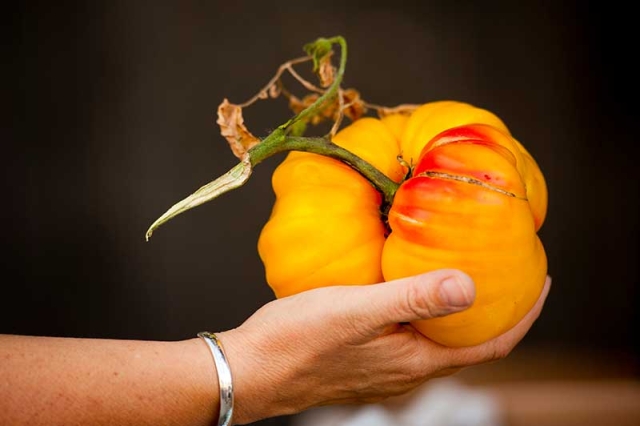Make the most of your veggie garden!
There may be snow on the ground, but the CSA team at Chatfield Farms is gearing up as spring gets closer and closer. As I seeded kale for transplanting in the greenhouse on Monday, I realized with alarm just how close spring is. What started as a calming activity escalated quickly as I thought to myself, “Hey kale is fun to seed, wait, kale, KALE WHICH IS ONLY SUPPOSED TO BE IN THE GREENHOUSE FOR FOUR WEEKS MEANING IN FOUR WEEKS I NEED TO PLANT THIS OUTSIDE MEANING SOMEHOW THE GROUND NEEDS TO THAW AND DRY AND GET COMPOSTED, AND....”
Ok. It appears to be high time to get your garden plans together if you haven’t already. If you plan to grow vegetables this year you may be eyeing some kale seeds of your own and wondering, like me, “What is the most efficient way to grow this delicious vegetable?” It is also possible that maximizing efficiency in the garden isn’t your top priority, BUT there must be a part of you that would rather be enjoying a crispy kale chip, spicy tomato salsa or crunchy snap pea rather than sweating it out in the dirt and weeds all day just for a good snack.

Luckily there are some techniques we can employ to influence the snacking to sweating ratios in our gardening and farming lives. Let me introduce intensive vegetable growing! Intensive growing techniques in agriculture refer to practices that increase the productivity of a growing space - they allow us to get higher yields out of smaller spaces, reduce labor spent growing vegetable crops and otherwise maximize efficiency and value. There are many, many ways to turn up the intensity, but I encourage you to start by thinking about four simple things:
- Efficient layout and ergonomic tools
- Keeping your soil covered to reduce weed pressure and soil loss
- Composting for fertility and high yields
- Succession plantings for veggies all season long
At Chatfield Farms we employ methods such as block planting and tight spacing to keep soil covered and maximize our space; we use silage tarps and cover crops to aid in weed mitigation; crop rotation, living mulches and compost made on-site to increase fertility in our soils to help us achieve higher yields.
What small changes could you make to your space? Could you store your tools right next to the space you plan to use them in? Splurge on that wheelbarrow? Try collecting leaves from your neighborhood or plant a winter-hardy cover crop such as rye to cover your soil over the winter. Find out what your first and last frost dates are, look at the days to maturity section on your seed packets and think about whether you might be able to plant some carrots after your snap peas are harvested, right in the same spot. Happy snacking!

Add new comment